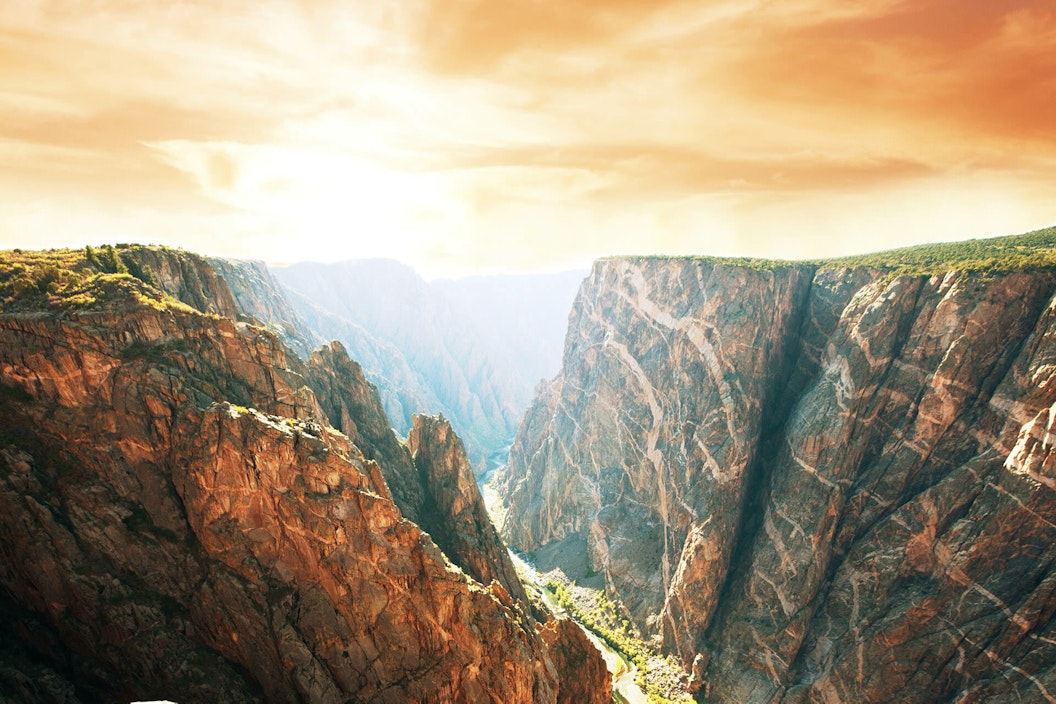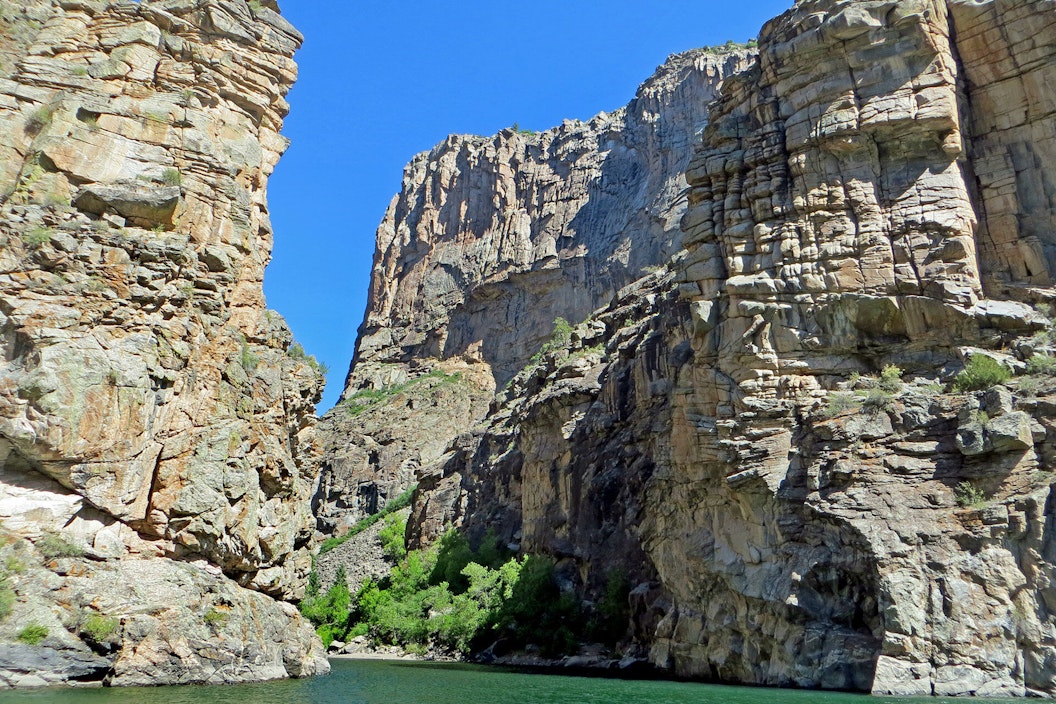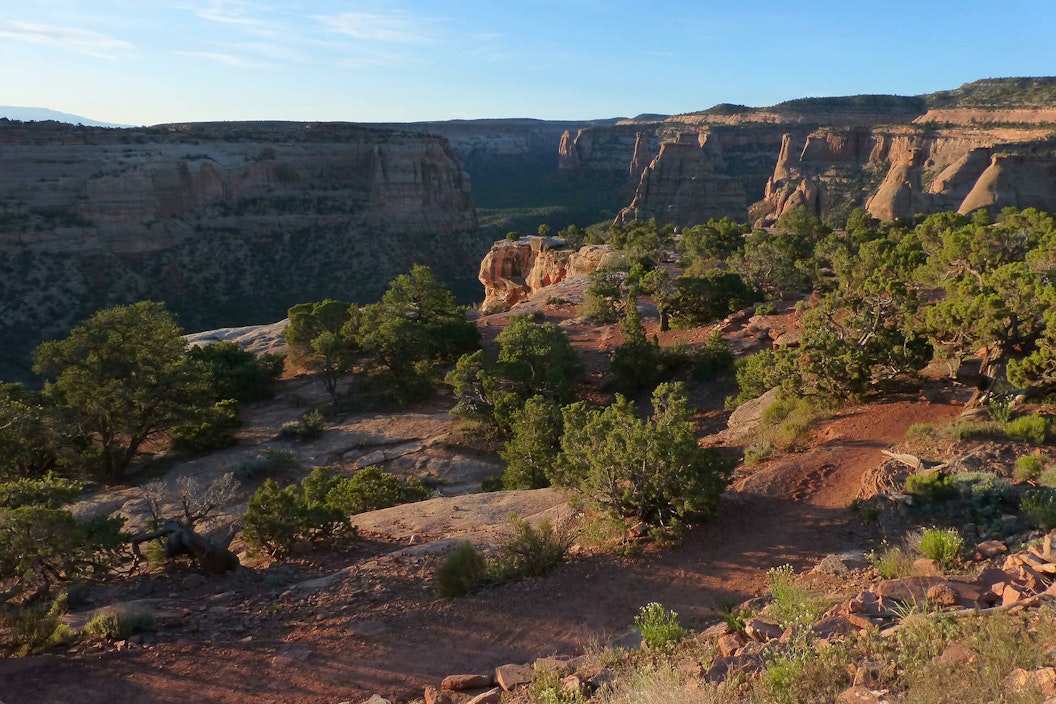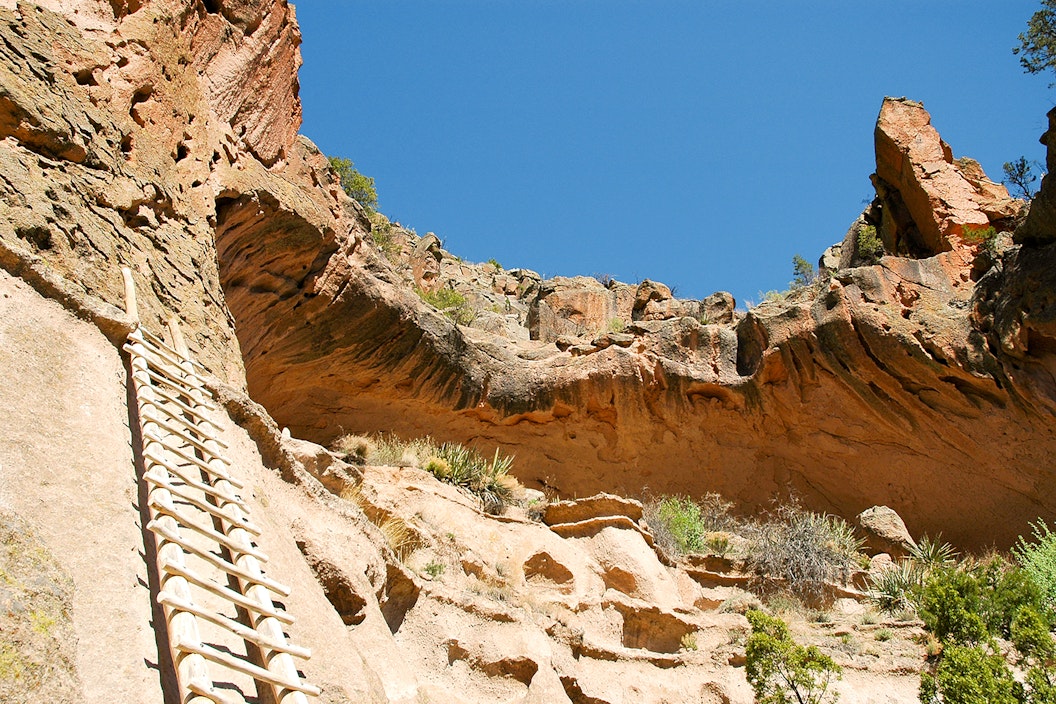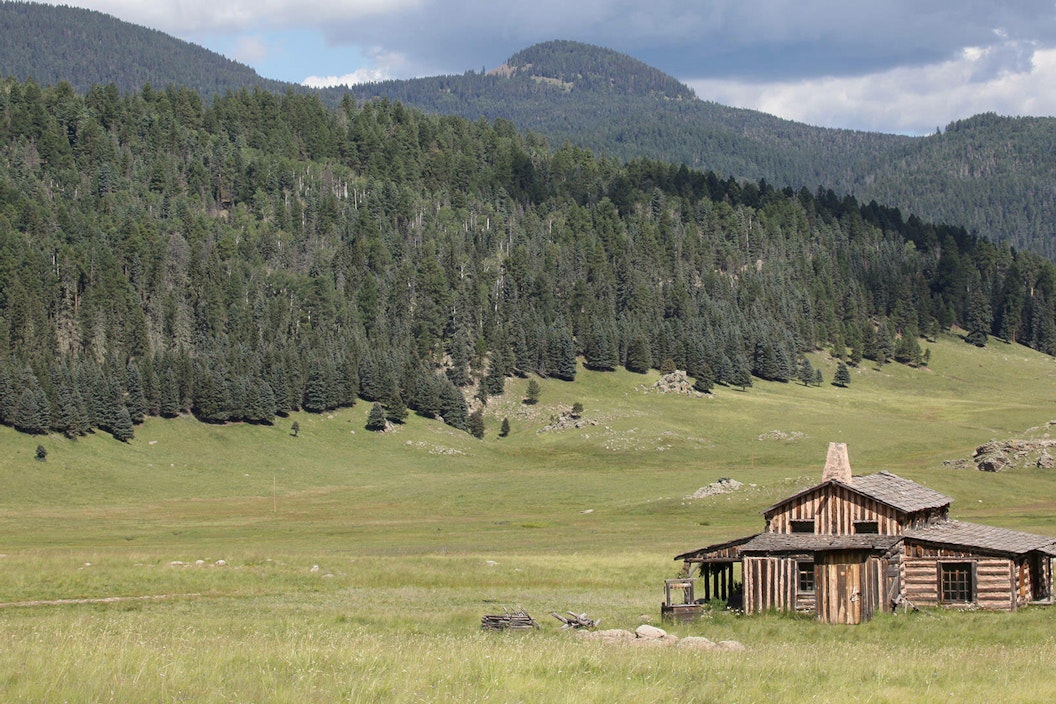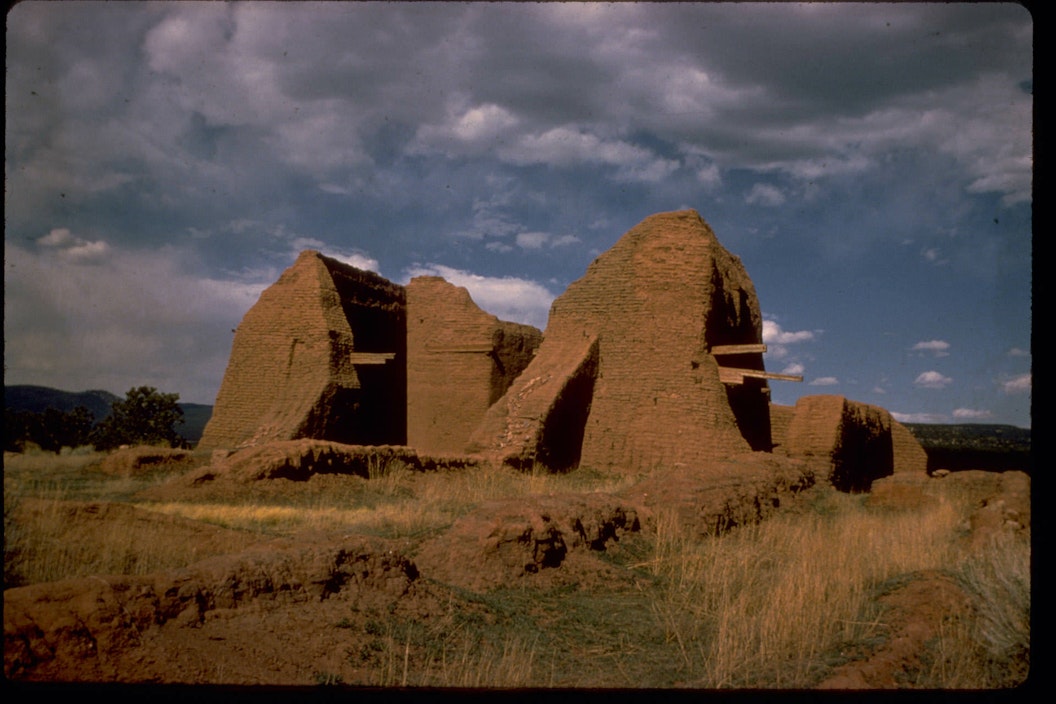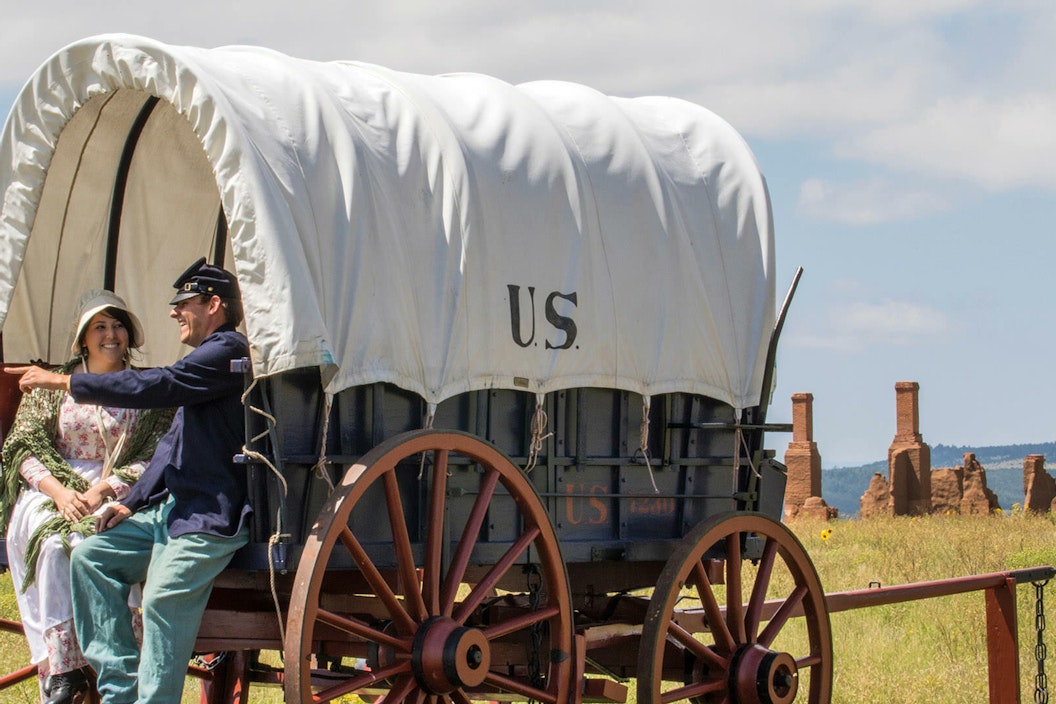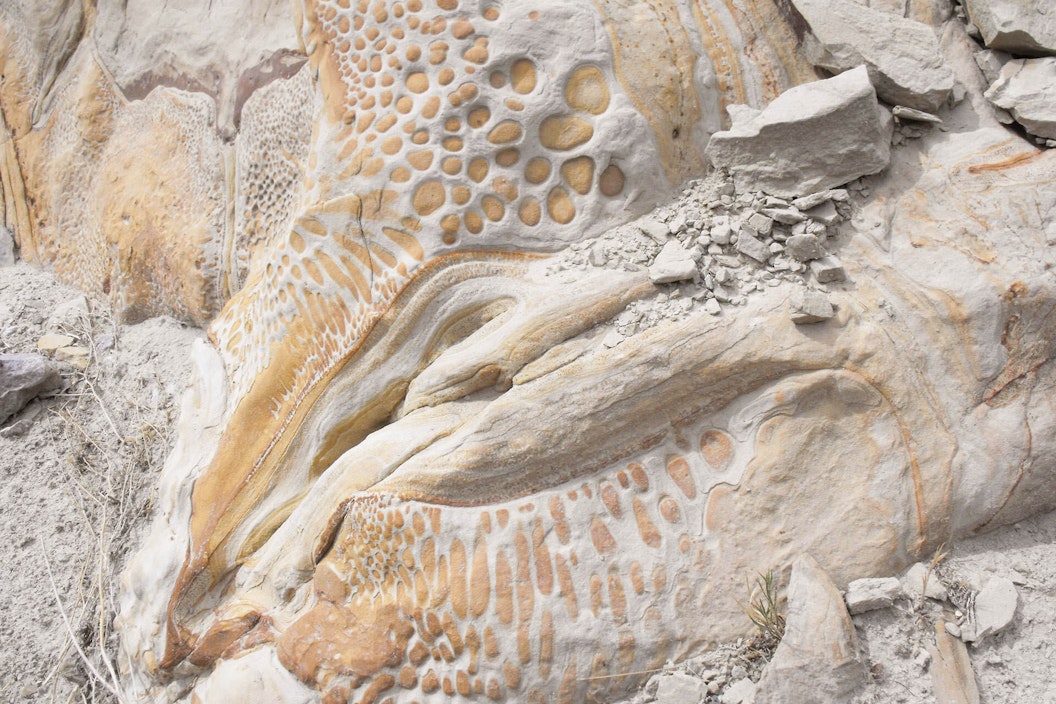

.
.
There are more women than ever in the lower ranks of fire. We are coming out in forceful numbers to get a bite of the wildland fire cake, says Joy Logan.
Joy is an assistant engine module leader based at Dinosaur National Monument in Colorado and Utah, covering fire management for the Northwest Colorado Parks Group, which consists of Dinosaur National Monument, Black Canyon of the Gunnison National Park, Curecanti National Recreation Area, and Colorado National Monument.
She is one of the women coming out and showing the world that women can do this work too. And, do it really well.
She is also in great company.
At Great Smoky Mountains National Park in Tennessee and North Carolina, Allyson Arulanantham is a biological science technician – fire effects monitor. She works for the Appalachian-Piedmont-Coastal Fire Management Zone and monitors the response of various vegetation communities to prescribed fire and wildfire.
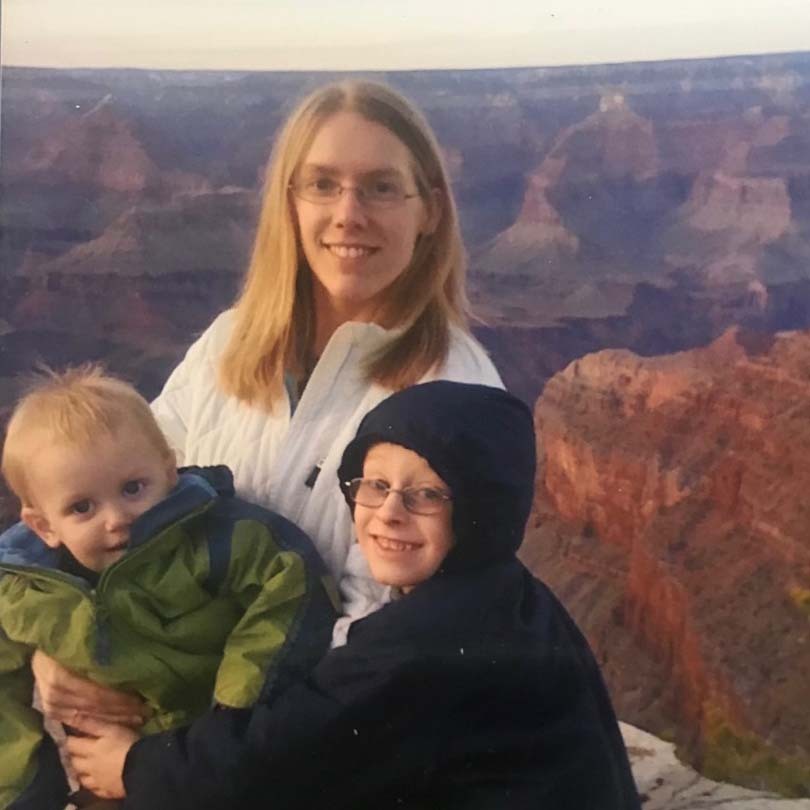
In Idaho, Shannon Deane has been working in fire-related jobs since 2009 and currently serves as the National Park Service (NPS) wildland fire budget analyst supporting parks from Texas to Montana. She plays a critical role in ensuring that the folks on the ground have what they need when it comes to anything fire related.
Over in New Mexico, Marla Rodgers, with more than thirty years of experience in wildland fire, is the fire management officer for a group of four national parks known as the Pueblo Parks: Bandelier National Monument, Valles Caldera National Preserve, Pecos National Historical Park, and Fort Union National Monument. Marla oversees all aspects of the wildland fire program in these parks, including wildland fire suppression, fuels management, fire aviation, fire ecology, and fire business management.
And while so many women are interested in wildland fire, the reality is that women make up less than five percent of the fire management leadership positions at the park level. At the national and regional levels, women make up less than two percent of the fire management leadership positions.
The National Park Foundation, with support from REI Co-op, is doing its part to help the NPS increase diversity within the ranks of its wildland fire workforce by providing the necessary funding to pilot new women’s fire corps crews.
The crews, comprised of six women each, will focus on fuels management (e.g., planned prescribed burns and other treatments that change or reduce wildland fuels and therefore decrease the risk of severe wildland fire to local communities and helps maintain healthy park ecosystems) and fire response in select national parks. By the time they begin their assignments, they will meet standards set forth by the National Wildfire Coordinating Group (NWCG) as Firefighter Type 2 and Faller 3.
As Tina Boehle, branch chief for communication and education in the NPS Division of Fire and Aviation Management says, “We’re hopeful that their experience with the women’s fire corps crews will empower them and encourage them to apply for National Park Service wildland fire management positions in the coming years. These types of initiatives allow for a more robust and resilient workforce. A diverse workforce will have a better understanding and acceptance of differences in race, ethnicity, gender identity, age, religion, disability, and sexual orientation, as well as value differences in education, income class, personality, skill sets, experience, and knowledge base.”
We had the pleasure of sitting down with Joy, Allyson, Shannon, and Marla to hear more about their wildland fire journey and hope you will enjoy this glimpse into our conversation.
What Drew You to a Career in Fire? What Are Some of Your Favorite Aspects of the Job and What Are the Biggest Challenges?
Allyson: Fire effects, getting to witness what happens after fire, was the main draw for me. I love getting to count pine seedlings and identifying the different plants that appear following a fire event. One of the biggest challenges of my job is the physical aspect. The days can be long and hot and if you aren’t drinking enough water or accidentally step in a yellow jacket nest, it can ruin your day.
Marla: Originally, I was drawn to the national parks themselves. It wasn’t until I joined NPS that I started learning about wildland fire. Back when I started with NPS, many of the park rangers were given wildland fire training as part of their initial training. I helped out on prescribed fires, assisted with some local wildland fires, and went out on fire crews as needed.
After I saw the big fire camps and the teams that it takes to manage large wildland fire incidents, I began to get hooked. It is so much more than just digging firelines. Seeing all the people doing different jobs, yet working together. And it all comes together, literally, overnight.
One of the best parts of my job is planning for the unexpected and then seeing it all come together at those critical moments. You don't know exactly when or where a wildland fire will happen, but you know it will happen. You plan. You train. And when you get a smoke report, hopefully it all comes together.
Another favorite aspect of my job is all the wonderful places I have travelled to all over the country. Not many people get to see a lot of the wild and remote places where we get to work. And when you get there, you meet new people who have the same fascination with firefighting that you have.
One of the biggest challenges is that you don’t know exactly when or where a fire will happen. Fire seasons, year after year, can take a toll. Families of wildland firefighters sacrifice a lot during fire season. You get a phone call and head out to a fire not knowing if you will be home in a few hours, a few days, or even weeks. You don't plan summer vacations in this line of work.
Shannon: At the start of my career, I worked closely with wildland fire employees in my various positions in Ranger Services. I saw the amazing work they were doing and wanted to be a part of this culture as well. My favorite thing about my position is that I can actively support wildland fire without having to be “boots on the ground.” There are a lot of moving parts behind the scenes that are critical to support those who are in the field and on the fire line.
Joy: It was a long road that brought me to wildland fire management, starting when I was a kid, with mentors being involved every step of the way. My parents and grandparents volunteered with our local community fire department and rescue squad. They instilled a sense of community support, involvement, and service that has stayed with me my entire life. I have always loved nature, being outside, wildlife, and fresh air.
I wanted to work in a field that combined my love of the outdoors with service to others, and a career in parks did just that.
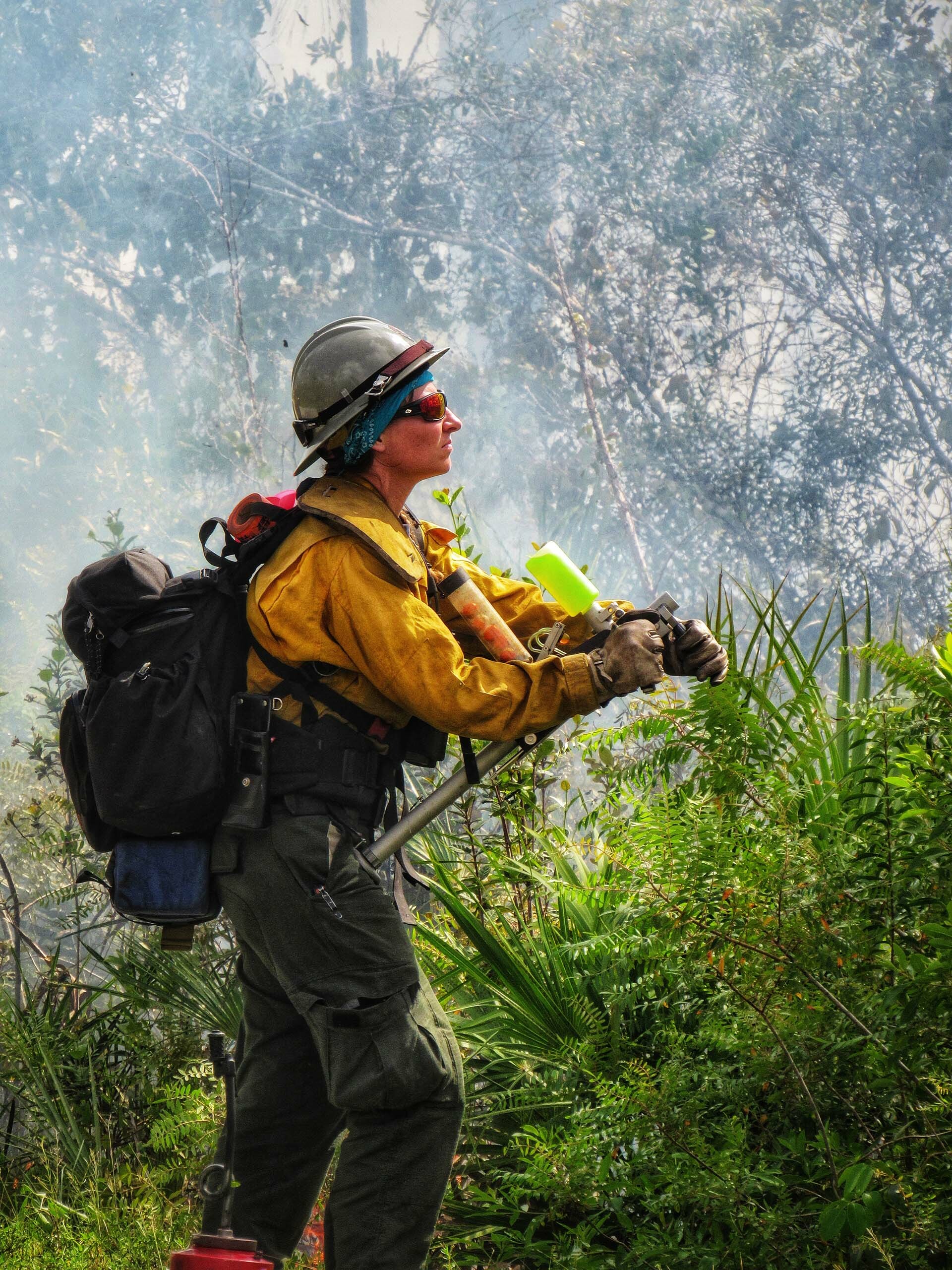
I love doing fuels management and running a chainsaw. I love being on the fireline, from ignition of prescribed fire, to hot lining during initial attack, to mop up. I love fuels planning, fire reporting, and structure assessments. I love learning and teaching. I love sharing my job with the community, playing dress up in firefighter outfits with children, and giving out informational pamphlets that might prevent a wildfire in our parks. I love that I get to travel and see the country while serving communities. I love working with my crew and making connections and lifelong friendships in NPS and the fire family. I love my job!
My biggest challenge, no contest, is that doing this job requires giving up a lot of time with my family. During peak fire season, we work hundreds of hours of overtime. I would not change it for anything, but I do miss my kids and I miss spending time with them during the summer months. It is normal for me to be Facetiming my 8-year-old while refilling the engine with water or texting my 13-year-old when I stop for a water and snack break at the top of the ridge, because that’s when I finally have cell service. I am extremely lucky to have their support and understanding.
In addition, coming into wildland fire when I did, I have had the road paved by many other amazing women, including Marla. There are more women than ever in the lower ranks of fire. We are coming out in forceful numbers to get a bite of the wildland fire cake. We have proven and demonstrated our abilities and strengths and usefulness. However, we still see that retaining strong and motivated women in the wildland fire service is difficult. I feel one reason for this is the home/work balance expected of women. Second to that, but still very much present, is the attitude that this is a man’s job and women are great supporters. This is not just the mindset of men in the field, but also one that we as women let into our brains. I have no doubt I can do the job, but can they do it better because they are a man? This mindset is part of what keeps women from advancing and seeking higher level positions. Enter the importance of great mentors!
How Has Mentoring Been Valuable and Important in Your Career?
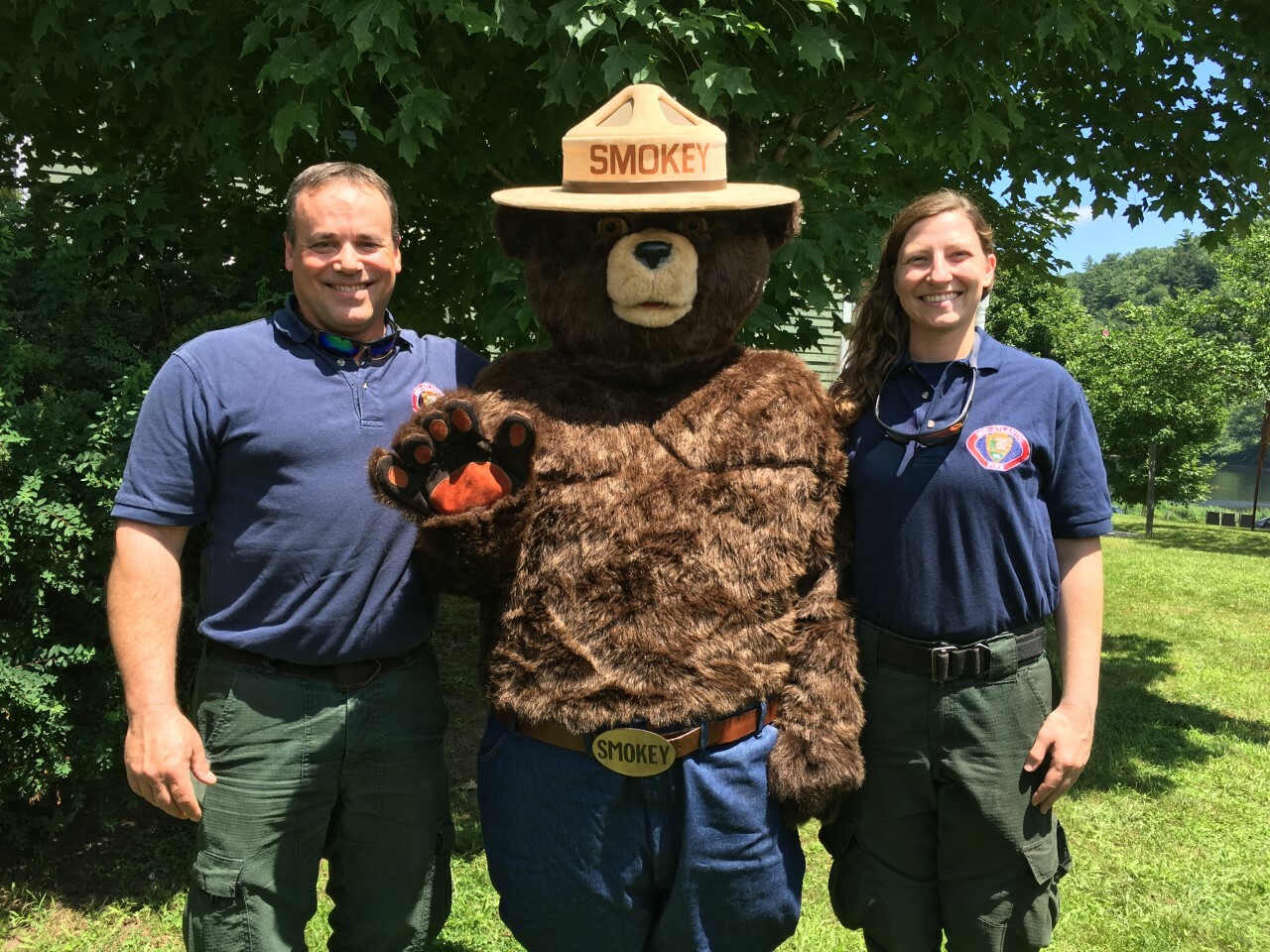
Shannon: Mentoring has been an integral part of my career. I would not have the position I have today without amazing mentors in my life. I feel fortunate beyond words to have worked with colleagues willing to teach, support, and positively guide my career. I enjoy coaching and mentoring the way I was brought up at the outset of my career. Managers have consistently fostered an environment where training and employee development is encouraged. I am excited to have the opportunity to reciprocate the support given to me to those who are interested in learning wildland fire budget.
Allyson: I really value having people to look up to and people I can trust to go to with concerns or for advice. Mentoring is important because it provides you with a direct line to someone who wants you to succeed and who will root for you through rough times.
Joy: Mentoring was important in getting me to the wildland fire career field, but it also has been even more important since I got on this track. I can honestly say without folks like Laura White, Jon Castimore, and Mike Guarino as mentors, I would not be the firefighter I am today. For example, Mike gave me pointers on applying for a job with NPS, no easy feat on USA Jobs. He also supported and encouraged me once I was on his crew and opened up doors and opportunities along the way. He nudged and even pushed me beyond my comfort zone to allow me to prove to myself that I had it in me to do what others doubted. Mentors are important because they give us opportunities to grow and they guide us when we need a hand. I hope to be half the mentor to someone that so many people have been to me.
What Do You Love about National Parks, and Specifically Fire in National Parks?
Marla: I enjoy being a part of the National Park Service. I love the places, the people, and the mission – to preserve and protect. So many of our national park sites are natural, cultural, and scenic landscapes. To protect these landscapes, fire must play its natural role in the ecosystem. Without fire, vegetation becomes overgrown and dense, putting it at risk for catastrophic wildfire.
Allyson: I love that national parks preserve and protect some of the most beautiful places in the world. I love that in designating national parks, we are maintaining ecological integrity. Fire is a natural process that plays a large role in helping maintain that integrity. Fire is necessary for the regeneration of many vegetation communities. Without fire in our natural landscapes, we lose habitat that is essential for many wildlife species. Fire also helps to limit disease outbreak and supports a diverse array of plant and fungal species.
Joy: I love that national parks are all connected, and that fire is a community. Working for NPS, I have met several amazing people and built lifelong friendships and connections in all divisions. In my specific position, I am blessed to have the opportunity to travel all over the country to assist other parks and experience their beauty and powerful messages. Our national parks preserve areas of natural, cultural, and historical value so that current and future generations can experience them. To be a part of that mission is a huge honor and something I take great pride in.
What are the Different Types of Fire, and Does Every Park have a Fire Component?
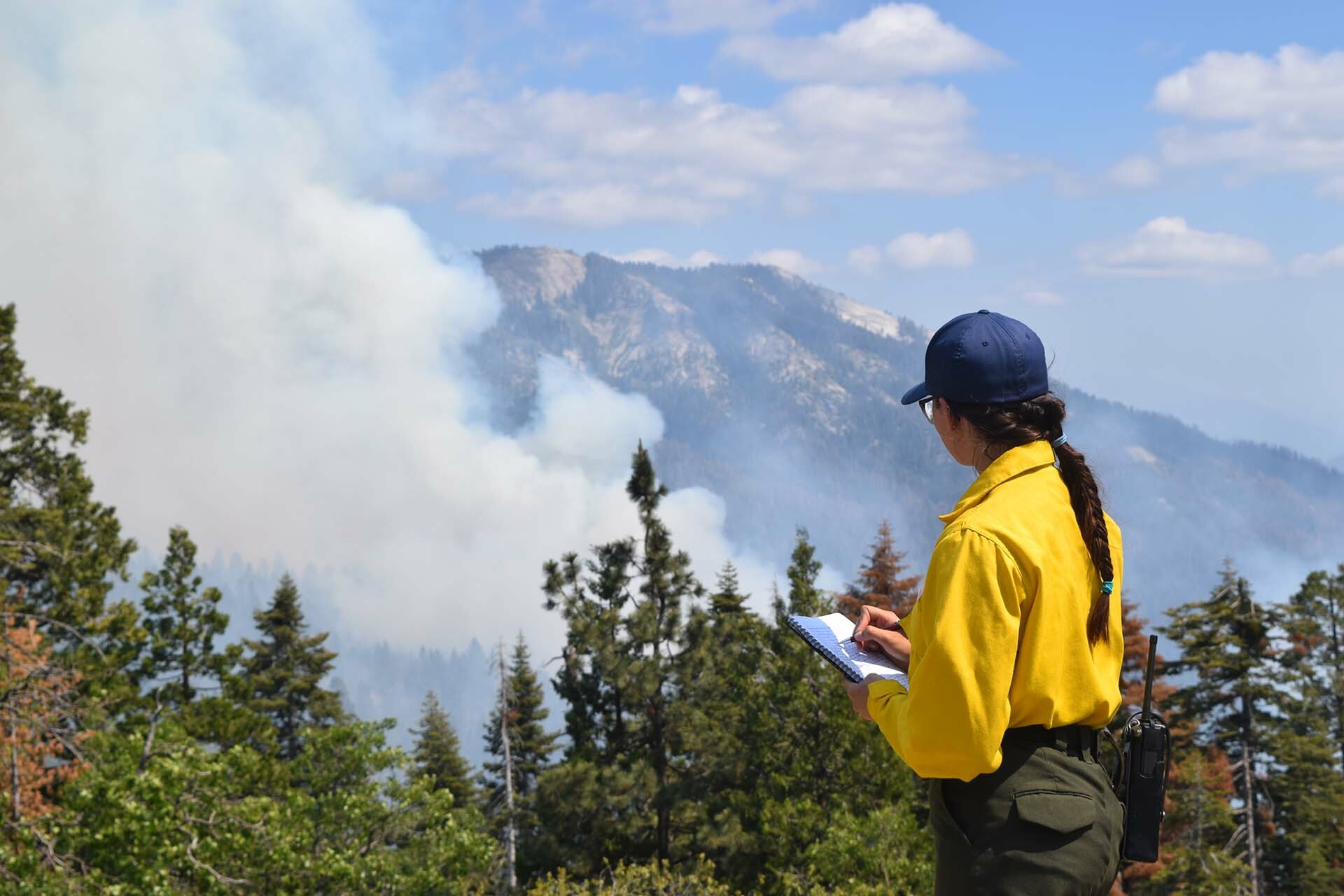
Marla: Wildland fire deals with the burnable vegetation component of a park. Structural fire deals with buildings and infrastructure. It is a significantly different skill set, although there is some overlap. There is different training and different certifications for each. Structural fires tend to be short lived events. They are generally done in less than a day. With wildland fire, events can go on for days, weeks, or even months and they move across the landscape.
Allyson: Wildland fire is fire in the natural landscape regardless of origin (natural or human caused). Fire can occur in any spot on the earth that has burnable vegetation and is a consistent process across those landscapes. While some landscapes see fire at more frequent intervals, wildfires still occur across the whole country. All ecosystems, whether forests, grasslands, or coastal marshes will burn at varying intervals. Thus, almost every national park has at least some fire component.
Prescribed fires or controlled burns are intentionally set fires in the wildland setting that aim to provide a variety of positive ecological outcomes. Indigenous communities used fire for centuries to manipulate and maintain landscapes for hunting and for crops. Decades of fire suppression following European settlement and westward expansion created large buildups of fuel which, when ignited, can result in large scale, high intensity wildfires now. Scientists who have studied ecosystems also realized that certain plant and tree species were not regenerating, and that woody species were taking over prairies and marshes.
Using prescribed fires along the wildland-urban interface is a useful tool in reducing fuel loads to help limit the intensity and duration of wildfires. The first prescribed fire in national park history was conducted at Everglades National Park in 1958 to maintain pine ecosystems. Since then, prescribed burns have been incorporated into many national parks’ management plans to preserve ecosystems as they once were for the centuries to come.
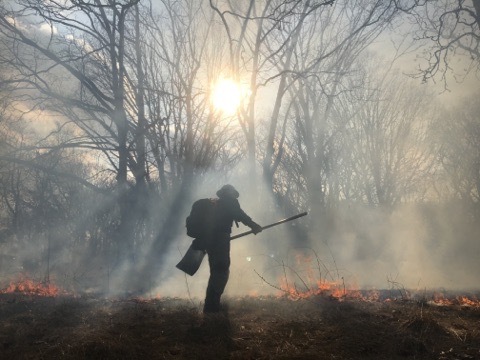
Joy: Some plants rely on fire for seed germination such as the Pine Rocklands in Everglades National Park. I was lucky enough to participate in prescribed burning in the Everglades, which has one of the largest prescribed fire programs in the country. They use fire to not only support the Pine Rocklands ecosystem, but also to maintain the wetlands by reducing woody vegetation.
While working at Delaware Water Gap National Recreation Area, we conducted the first ever RX (prescribed) burn on Little Round Top in Gettysburg National Military Park with one of the main objectives being to maintain a historically accurate landscape in terrain that did not lend well to mechanical treatments, so a non-chemical approach was preferred.
Prescribed fires reduce fuel loading over large areas and allow us to control the conditions under which an area burns. This means that when an unplanned wildfire starts in those areas, the negative impacts are far less as is the threat to local communities.
Shannon: What’s interesting as a budget analyst is to see the evolution of our program go from defining the benefits of prescribed fire as reducing the costs to fight fire to a more meaningful definition of the reduction of risk to our resources. If we approach tasks in fire with the mindset of implementing treatments with the goal of reducing risk, whether that risk may be to the public, infrastructure, unique natural resource, irreplaceable cultural resources, or our hardworking firefighters, I believe we end up in a much better, safer, more defensible position in the long term as a program.
What is the Role of Fire Business Management and Why is it Important?
Shannon: For wildland fire funding to be utilized properly, appropriation law and fire budget rules must be respected. If these laws and rules are broken, funding has the potential to be taken away. I am responsible for ensuring that the rules and laws are followed at the park fire programs under my purview. I am in constant contact with my parks to support and answer an array of questions. I also come at every question or issue with the approach of providing an education on the topic. Every day is a new day with different obstacles to overcome and new things to learn.
Marla: In the federal government, there are several different agencies with wildland fire responsibilities. Each agency has its own rules and regulations on things from budget, to hiring, to purchasing, etc. The agencies came together and made a set of rules that apply specifically to fire business management. So particularly on larger incidents, when an agency needs help from their interagency partners, there is a predetermined way to do it that all agencies have agreed to at the national level. Examples include how you order supplies and personnel, travel rules and regulations, work and rest guidelines (how many hours in a day you can work and how many consecutive days can be worked without a day off), and who is eligible for hazardous duty pay.
What Do You Want People to Know about Wildland Fire Management that They May Not Know Already?
Joy: It is the best job in the world. We make a difference for people’s lives and our national treasures. No two days are ever the same, so the variety keeps things fresh and your interest piqued.
I would also want you to know that you do not have to do it as a full-time job to support the efforts and make a difference. The saying “it takes a village” is completely true and there are ways almost anyone can support the wildland fire programs.
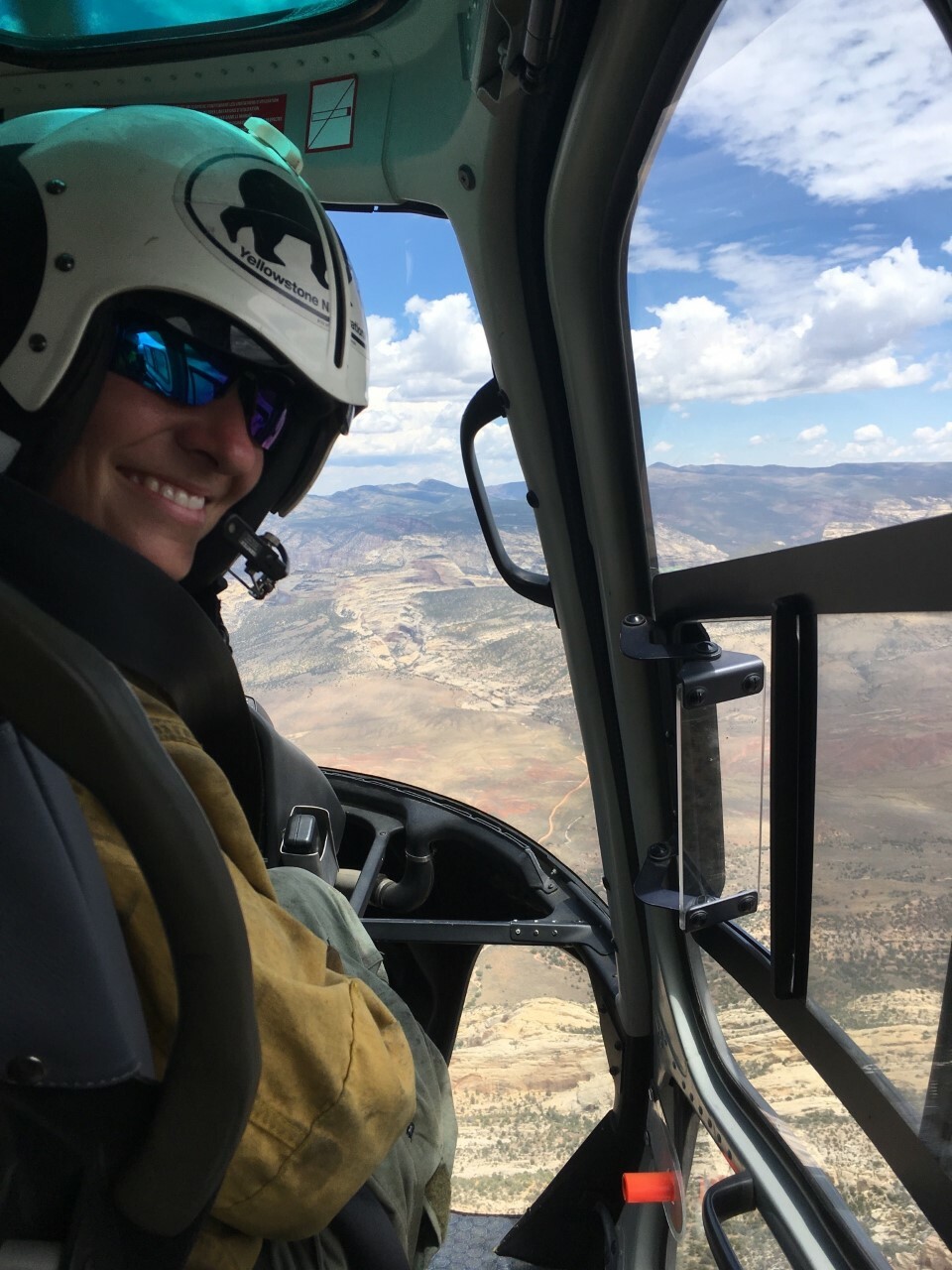
For example, on long duration fires, Dinosaur National Monument supports local restaurants when bringing in food for emergency support staff. Our dispatch center out of Craig, Colorado, is amazing and provide support and safety to us. Public information officers get the word out and update the public on operations and community impacts. Resource advisors guide and assist us in rehabbing areas of impact. Partners in other federal agencies such as Bureau of Land Management, Bureau of Indian Affairs, U.S Fish and Wildlife Service, the U.S. Forest Service, as well as local volunteer fire departments and contract crews all work together to accomplish the goal of protecting communities across the nation. Not unlike most other things in our lives, the needs and goals of wildland fire management teams and firefighters are interconnected with the needs and goals of so many others.
Marla: I think that people have the perception that being in wildland fire management is a tough and dirty job only for hearty young men and women. Being a wildland firefighter definitely can be like that. But there is also a lot more to wildland fire.
I would encourage anyone with an interest in knowing about wildland fire to take basic firefighter training. Taking the training doesn’t mean you have to become a firefighter. It gives you good information about wildland fire and what wildland firefighters do. There are lots of ways to become involved in wildland fire. Some people like me have careers as wildland firefighters, or fire business management administrators, or ecologists, or dispatchers, aviation managers, etc. But there are also a lot of people who have other careers that come out to support wildland fire when there is a need. They might work with a fire crew for just two weeks during the summer. Or they might help incident management teams doing public information, ordering supplies, managing aircraft, or driving personnel to the airport. Everyone has a skill that could be useful.
Shannon: We really aren’t all that different than the rest of the NPS funds and programs. The funds have different constraints and flexibilities, but at the end of the day, as employees of the NPS, we follow the same NPS policies and adhere to the basics of appropriations law.
How Can Everyday People Help Ensure Fire Safety in National Parks?
Allyson: We can ensure fire safety in national parks by educating people on the causes, risks and dangers of wildfires. Many human-caused wildfires are accidental and raising awareness on what causes these accidental fires can help limit their impact in national parks. In addition, only build campfires in designated areas and pay extra attention to burn bans, red flag warnings and other unfavorable weather conditions.
Joy: Be aware. Put out your campfires. Don’t drag chains and be sure to maintain your vehicles. Park in designated areas, not in areas of tall dry grass. Support prescribed burning and fuels reduction efforts. Be patient and understanding as we work to control wildfires in your area and listen to instructions given to you in times of crisis. Our main objective is always first and foremost firefighter and public safety. We always have your best interest at heart.
Marla: There is a saying that we use in public lands, “know before you go.” Always check with the local agency for current fire restrictions before going to public lands. Restrictions on campfires, smoking, using certain types of spark generating equipment might be in place when the fire danger is high.
Firewise is a program with the National Fire Protection Association (NFPA) that teaches homeowners how to prepare their homes for wildfires. You can look up their information online or you can find a local organization in your area.
Another helpful resource is Recreate Responsibly, which provides tips for enjoying national parks while also helping to preserve them for each other and future generations.
What Would You Say to Someone Who is Considering a Career in NPS Wildland Fire Management?
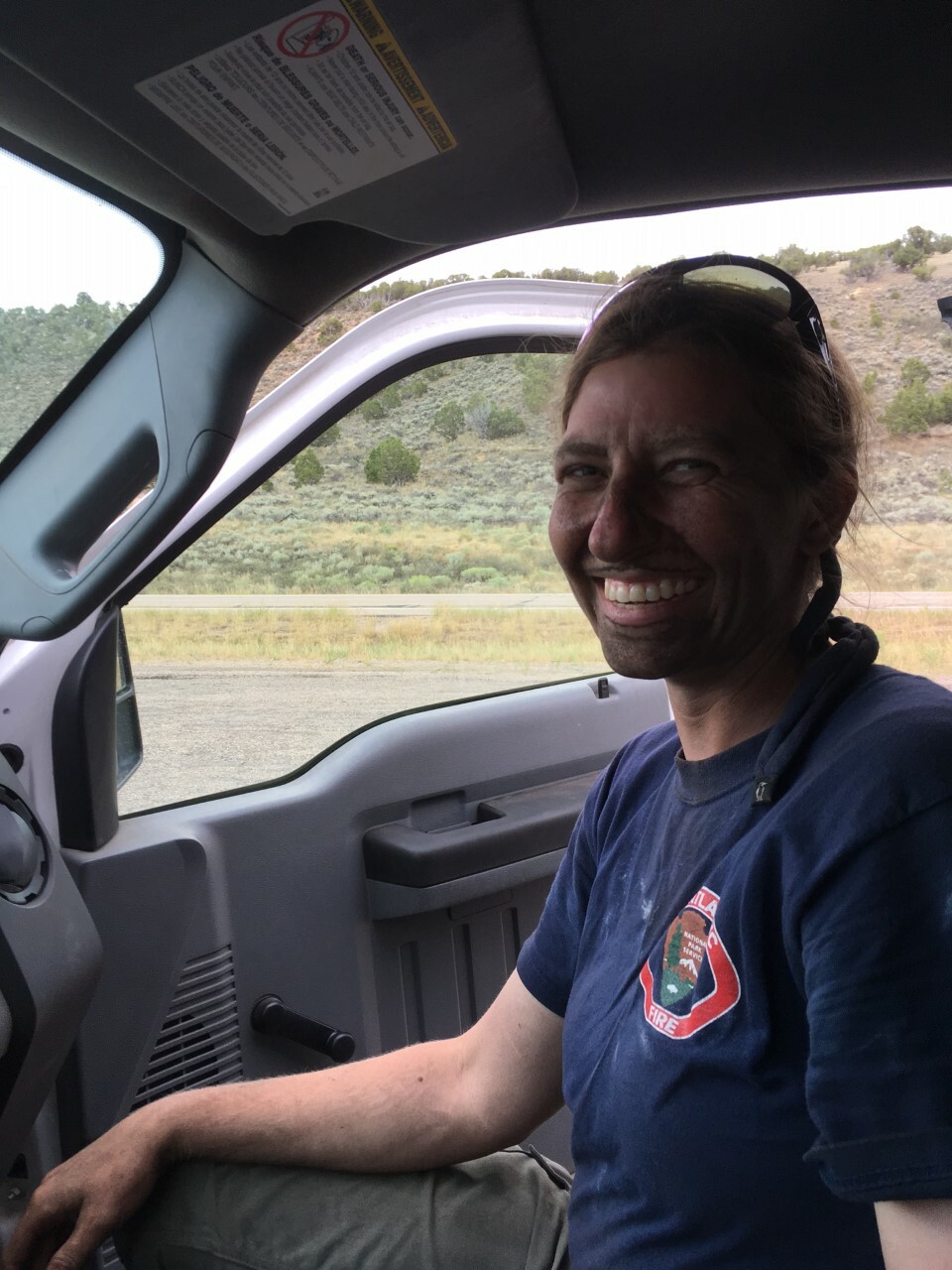
Marla: Talk to us! There are NPS wildland fire programs all over the country and we can talk to you about your interests, how to apply for jobs, and how to find training.
There are so many different opportunities in wildland fire. You should look into it even if you don’t think that you are a wildland fire type of person. You might be surprised!
Allyson: I would encourage someone considering a career in wildland fire management with the NPS to go for it. They will have the opportunity to travel all over the country, meet some of the best people, and help stop catastrophic wildfires. They will also get to be a part of restoring ecosystems and protecting the plants and animals that live within them.
Shannon: I would like people to know that everyone can play an important role in wildland fire management. I never imagined as a little girl from Twig, Minnesota, that I would become a wildland fire budget analyst. One does not need to be physically fighting fire to make a difference – there are countless ways to support in your own meaningful way.
I wish I knew sooner in my upbringing that I too could make an important impact. Be willing to ask questions and put yourself out there. You never know where you will land!
Joy: It is one of the most demanding and rewarding careers. Start as early as you can, but it is never too late. Be persistent and determined, look for advocates and mentors and take their advice. Always be willing to learn and volunteer for every job no matter how small or meaningless you think it is. Be part of the team and keep a positive mental attitude. Also, having a supportive family always helps, but never let anyone (I mean NO one) tell you that you cannot do it, because you can! Then when you do, make sure you lift others up.
We could have spent hours upon hours talking with Joy, Allyson, Shannon, and Marla. We are so grateful for everything that they all do for our national parks and local communities, and hope you are as inspired by their insights as we are.
In the comments below, and on social media using #WomenInParks, we invite you to please share stories about women who inspire you and women you would like to learn more about through national parks. We also invite you to learn more about the National Park Foundation’s efforts to help ensure that women’s stories are shared, preserved, and leveraged to inspire current and future generations.
Meet the Authors
Allyson Arulanantham is a biological science technician - fire effects monitor. She works for the Appalachian-Piedmont-Coastal Fire Management Zone and monitors the response of various vegetation communities to prescribed fire and wildfire. She recalls that her parents immigrated to the U.S. in the 1980s and were living in Los Angeles before her dad was offered a job in Reno. At the time, her mom didn’t want to move, but was convinced otherwise after seeing Lake Tahoe and the Sierra Nevadas. As a result, Allyson grew up hiking, star gazing, camping, and participating in clean up and beautification events with her family, and early on realized that she wanted a career that involved being outdoors. Following college graduation, where she received a degree in zoology, she did one year of AmeriCorps at Great Smoky Mountains National Park on the vegetation management crew which then led her to fire effects and her current position.
Joy Logan is an assistant engine module leader based at Dinosaur National Monument in Colorado and Utah, covering fire management for the NW Colorado Parks Group. She started her career with NPS in the Interpretation Division at Delaware Water Gap National Recreation Area in 2014. She had been a volunteer firefighter/EMT for many years prior to that and wanted to pursue a career in wildland fire. She is qualified as an Incident Commander Type 5, Engine Boss, Intermediate Faller, and EMT Fireline. Joy received a bachelor’s degree in Zoology and a masters in Parks and Recreation from NC State University. She has two wonderful children, Tierney and Keagan.
Marla Rodgers is currently the fire management officer for a group of four national park units known as the Pueblo Parks which include Bandelier National Monument, Valles Caldera National Preserve, Pecos National Historical Park, and Fort Union National Monument. She oversees all aspects of the wildland fire program in these units such as wildland fire suppression, fuels management, fire aviation, fire ecology, and fire business management. Marla has more than thirty years of experience in wildland fire and has worked in prescribed fire in South Florida, with wildland fire modules, engines and crews in the western and southeastern U.S., and incident management teams (IMT) all over the country. Originally from California, she received a bachelor’s degree in geography from the University of California, Los Angeles and now lives with her family in Los Alamos, New Mexico.
Shannon Deane, who grew up in northern Minnesota in the small town of Twig and began her career with the NPS in 2009, is the wildland fire budget analyst supporting parks from Texas to Montana. From administrative assistant in the Alaska Regional Office for the Ranger Services Division, to program analyst for NPS Alaska Region Ranger Services, to regional fire budget analyst supporting Denali National Park & Preserve and Yukon-Charley Rivers NP, to regional special park uses coordinator and regional uniform coordinator, to business manager for the Fire Management Leadership Board, Shannon has worn various hats within the NPS. She also serves as a member of the Great Basin National Buying Team for interagency wildland fire and all hazard incidents. She is a Rapport master graduate and a Clifton Strengths coach. Shannon lives in Boise, Idaho. In her personal time, she loves to cook and garden, and enjoys camping, visiting hot springs, long road trips, and spending time with her family.
